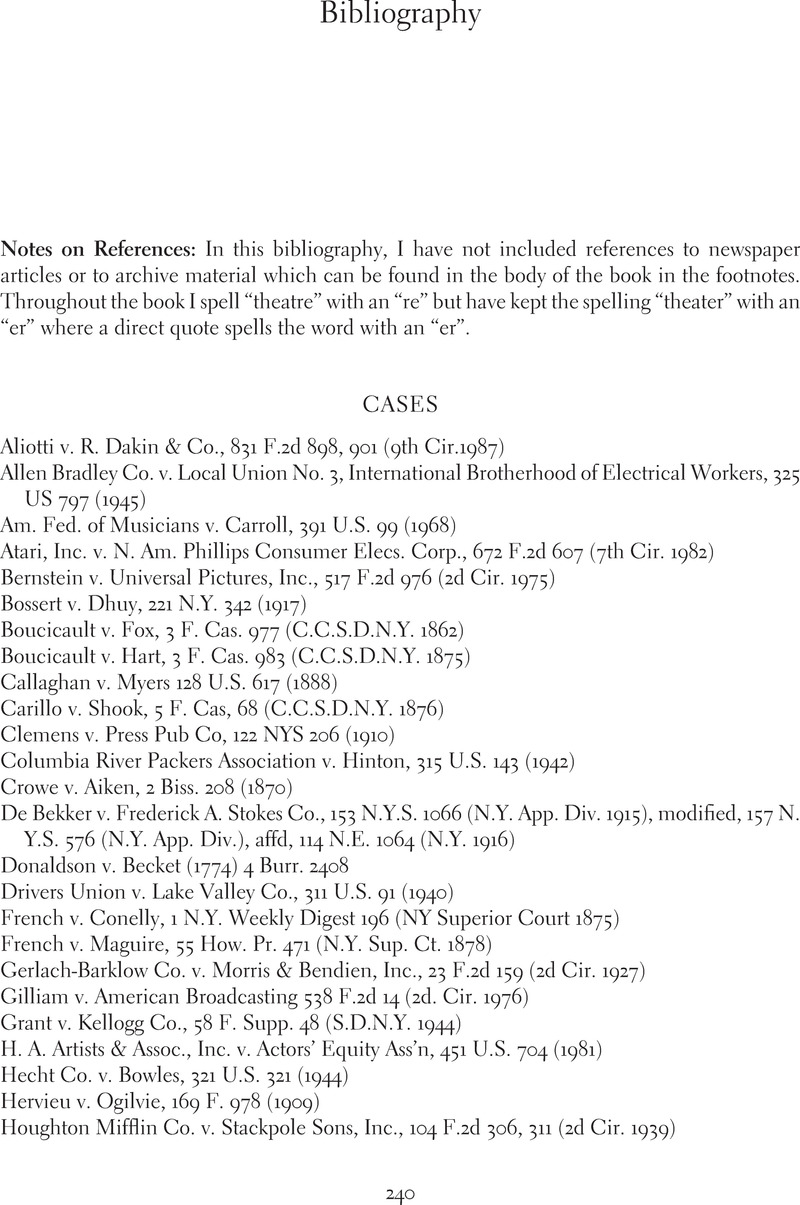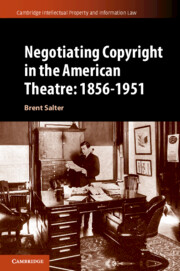Book contents
- Negotiating Copyright in the American Theatre: 1856–1951
- Cambridge Intellectual Property and Information Law
- Negotiating Copyright in the American Theatre: 1856–1951
- Copyright page
- Contents
- Figures
- Tables
- Acknowledgments
- Introduction
- Part I Mediating the American Theatre
- Part II The Organizational Response
- Bibliography
- Index
- Cambridge Intellectual Property and Information Law
- References
Bibliography
Published online by Cambridge University Press: 23 December 2021
- Negotiating Copyright in the American Theatre: 1856–1951
- Cambridge Intellectual Property and Information Law
- Negotiating Copyright in the American Theatre: 1856–1951
- Copyright page
- Contents
- Figures
- Tables
- Acknowledgments
- Introduction
- Part I Mediating the American Theatre
- Part II The Organizational Response
- Bibliography
- Index
- Cambridge Intellectual Property and Information Law
- References
Summary

- Type
- Chapter
- Information
- Negotiating Copyright in the American Theatre: 1856–1951 , pp. 240 - 251Publisher: Cambridge University PressPrint publication year: 2022



